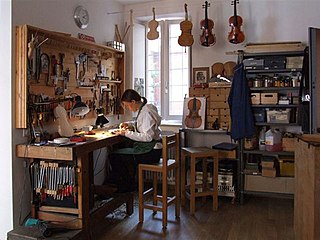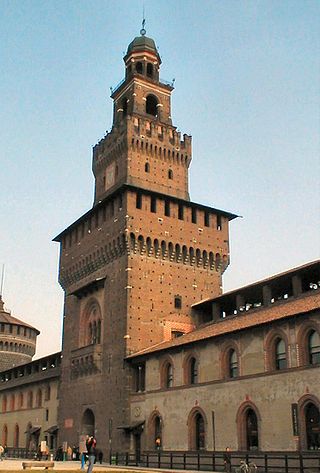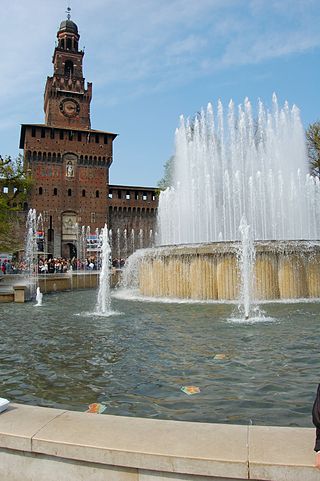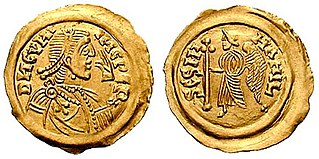
Cremona is a city and comune in northern Italy, situated in Lombardy, on the left bank of the Po river in the middle of the Pianura Padana. It is the capital of the province of Cremona and the seat of the local city and province governments. The city of Cremona is especially noted for its musical history and traditions, including some of the earliest and most renowned luthiers, such as Giuseppe Guarneri, Antonio Stradivari, Francesco Rugeri, Vincenzo Rugeri, and several members of the Amati family.

A luthier is a craftsperson who builds or repairs string instruments that have a neck and a sound box. The word "luthier" is originally French and comes from the French word for lute. The term was originally used for makers of lutes, but it came to be used in French for makers of most bowed and plucked stringed instruments such as members of the violin family and guitars. Luthiers, however, do not make harps or pianos; these require different skills and construction methods because their strings are secured to a frame.

Bruno Maderna was an Italian conductor and composer.

The Certosa di Pavia is a monastery and complex in Lombardy, Northern Italy, situated near a small town of the same name in the Province of Pavia, 8 km (5.0 mi) north of Pavia. Built in 1396–1495, it was once located on the border of a large hunting park belonging to the Visconti family of Milan, of which today only scattered parts remain. It is one of the largest monasteries in Italy.
The music of Milan has ancient roots. The Ambrosian chants are among the first codified music in Western culture, which fact led to the later development of its concept of scales, for example. In more recent history, the city of Milan has been an important social, cultural, political and commercial center not just in Italy, but in all of Europe.

Lorenzo Ferrero is an Italian composer, librettist, author, and book editor. He started composing at an early age and has written over a hundred compositions thus far, including twelve operas, three ballets, and numerous orchestral, chamber music, solo instrumental, and vocal works. His musical idiom is characterized by eclecticism, stylistic versatility, and a neo-tonal language.

The Yale Collection of Musical Instruments, a division of the Yale School of Music, is a museum in New Haven, Connecticut. It was established in 1900 by a gift of historic keyboard instruments from Morris Steinert, and later enriched in 1960 and 1962 by the acquisition of the Belle Skinner and Emil Herrmann collections. Initially housed under the dome of Woolsey Hall, it was moved in 1961 to a historic Romanesque structure on Hillhouse Avenue, constructed in 1895 for the Alpha Delta Phi fraternity.

Carlo Bisiach (1892–1968) was a violin maker born in Milan Italy. Bisiach's work contributed to the rebirth of violin making in the region after the difficult times of World War I and World War II. After working with his father Leandro in Milan and then Siena, Carlo established himself at Florence in 1922. The most talented of Leandro's sons, Carlo went on to develop his own style quite separate from the Antoniazzi-derived work of his father and brothers.

The Museum of the Risorgimento, located in the 18th-century Milanese Palazzo Moriggia, houses a collection of objects and artworks which illustrate the history of Italian unification from Napoleon's first Italian campaign of 1796 to the annexation of Rome in 1870. The city of Milan played a key role in the process, most notably on the occasion of the 1848 uprising against the Austrians known as the Five Days of Milan.

The Zone 1 of Milan, since 2016 officially Municipality 1 of Milan, is one of the 9 administrative divisions of Milan, Italy.

The Museo Egizio or Egyptian Museum is a museum sited in the Sforza Castle of Milan, Italy. The Castle is one of the most famous monuments in Milan and is home to several museums including the Egyptian Section of the Milan Archaeological Museum, the Museum of Ancient Art, the Pinacoteca and the Museum of Musical Instruments.

The Diocesan Museum of Milan is an art museum in Milan housing a permanent collection of sacred artworks, especially from Milan and Lombardy. Originally conceived by Ildefonso Schuster in 1931 as a vehicle to protect and promote the art collection of the Archdiocese of Milan, the museum was eventually established in the former headquarters of the Dominican Order in the back of the Basilica of Sant'Eustorgio with the support of Pope Paul VI. In 2001 Carlo Maria Martini inaugurated the current venue located in Porta Ticinese.

Casa Manzoni is a historical palace sited in via Morone 1 near the quadrilateral of fashion in the center of Milan, Italy. Owned by the Manzoni family, the house was the birthplace of the famous Italian writer Alessandro Manzoni in 1785.

The Applied Arts Collection of Milan is located in the Sforza Castle museum complex under the management of the municipality of Milan, Italy. The museum is divided into several sections with particular emphasis on jewelry, ivories, pottery and art glass.

Osvaldo Coluccino is an Italian composer and poet.

The Studio di fonologia musicale di Radio Milano was established 1955 in Milan following a joint initiative by Luciano Berio and Bruno Maderna.

The coinage of the Lombards refers to the autonomous productions of coins by the Lombards. It constitutes part of the coinage produced by Germanic peoples occupying the former territory of the Roman Empire during the Migration Period. All known Lombard coinage was produced after their settlement of Italy. The coinage originates from two distinct areas, in Langobardia Major between the last decades of the sixth century and 774, and in Langobardia Minor, in the duchy of Benevento, between approximately 680 and the end of the 9th century.

The following outline is provided as an overview of and topical guide to Milan:

The Violin Museum is a musical instrument museum located in Cremona. The museum is best known for its collection of stringed instruments that includes violins, violas, cellos and double basses crafted by renowned luthiers, including Antonio Stradivari and Giuseppe Guarneri del Gesù.

The Fisogni Museum of the petrol station, in Tradate, Italy, is a museum about gas pumps, gas stations and petroliana, founded by Guido Fisogni in 1966.






























